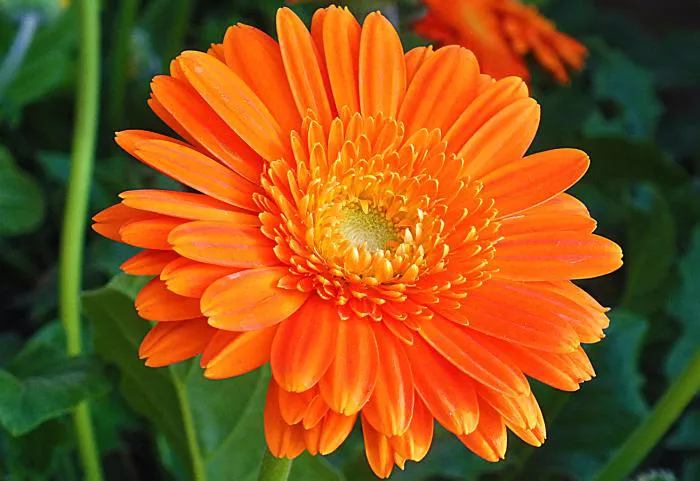Calendula flowers, commonly known as marigolds, are bright and cheerful blooms. They hold a rich history and carry significant meanings across various cultures. This article explores the meaning of calendula flowers.
Historical Significance
Calendula has been cherished for centuries. Ancient Egyptians used it for skincare and rituals. The Romans also valued calendula for its vibrant color. They often included it in celebrations. Over time, calendula became associated with warmth and sunshine.
In medieval times, calendula was used in religious ceremonies. It symbolized the sun and was believed to bring good luck. People often planted calendula in their gardens to ward off evil spirits. This tradition continues in some cultures today.
Symbolism
Calendula flowers symbolize different things in various cultures. Generally, they represent joy and positivity. Their bright yellow and orange colors evoke feelings of happiness. In the language of flowers, calendula stands for creativity and imagination.
In some traditions, calendula is associated with love. It is often given as a token of affection. The flower can express deep feelings. It is a popular choice for weddings and anniversaries.
Calendula is also linked to healing. Its medicinal properties have been recognized for centuries. The flower is known for its anti-inflammatory and antiseptic qualities. Many use calendula in herbal remedies and skincare products. This connection to healing enhances its symbolism as a flower of hope and renewal.
Uses of Calendula
Calendula flowers are versatile. They have culinary, medicinal, and ornamental uses. In the kitchen, the petals add color to salads and dishes. They have a mild, peppery flavor. People also use calendula in teas and infusions.
Medicinally, calendula is celebrated for its healing properties. It is often used to soothe skin irritations. Many ointments and creams contain calendula extract. It is effective for cuts, burns, and rashes. Some studies suggest that calendula may help speed up wound healing.
In addition to its healing properties, calendula is used in herbal medicine. It can be found in tinctures and herbal blends. People use it to support digestion and boost immunity. Its calming effects may also aid in reducing anxiety.
Calendula is a popular choice for gardeners. Its bright flowers attract pollinators like bees and butterflies. They are also excellent companions for other plants. Planting calendula can help repel pests in the garden.
Growing Calendula
Calendula is relatively easy to grow. It thrives in full sun and well-drained soil. Start by planting seeds in spring. They can also be sown in late summer for a fall bloom. Calendula prefers cooler temperatures. This makes it ideal for early spring or late summer gardens.
Watering is essential but should be moderate. Overwatering can lead to root rot. Allow the soil to dry out between waterings. Calendula is drought-tolerant once established. This makes it a low-maintenance choice for busy gardeners.
Deadheading, or removing spent blooms, encourages more flowers. It also helps keep the plant looking tidy. Fertilizing is generally unnecessary, but a balanced fertilizer can promote growth. With the right care, calendula will bloom from spring to frost.
Pests and Problems
While calendula is relatively pest-resistant, it can face some challenges. Aphids and spider mites are common pests. They can be controlled with insecticidal soap or neem oil. Regularly inspecting the plants can help catch infestations early.
Fungal diseases may occur in humid conditions. Powdery mildew is a common issue. Ensure proper spacing between plants to improve air circulation. This can help prevent fungal growth.
If leaves turn yellow, it may indicate overwatering or nutrient deficiency. Adjust watering practices and consider adding organic compost. This will provide the necessary nutrients for healthy growth.
Cultural Significance
In different cultures, calendula has distinct meanings and uses. In India, it is used in festivals and weddings. The vibrant colors symbolize prosperity and happiness. People often use marigold garlands in ceremonies.
In Mexico, calendula is a key element in Día de los Muertos celebrations. The bright flowers guide spirits back to their loved ones. They are placed on altars and graves as offerings.
In herbal traditions, calendula is often used for women’s health. It has been utilized in remedies for menstrual issues. Its soothing properties make it a valuable herb for women.
Conclusion
The calendula flower is more than just a pretty bloom. It holds deep meanings and rich history. From its symbolism of joy and love to its practical uses in cooking and medicine, calendula is a cherished flower across cultures.
Growing calendula is an easy way to bring color and positivity to your garden. Its healing properties and cultural significance make it a valuable addition to any home. Whether you admire it for its beauty or use it for its benefits, calendula is a flower worth celebrating.
With its bright petals and cheerful presence, calendula will continue to thrive in gardens and hearts for generations to come.
Related topics:

